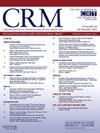Haemodynamic and clinical outcomes at 5 years according to predicted prosthesis-patient mismatch after transcatheter aortic valve replacement
IF 1.6
Q3 CARDIAC & CARDIOVASCULAR SYSTEMS
引用次数: 0
Abstract
Background/Purpose: Although the impact of predicted prosthesis-patient mismatch (PPMP) on outcomes after surgical aortic valve replacement is well established, studies on PPMP in transcatheter aortic valve replacement (TAVR) are limited. This study investigated the effects of PPMp on haemodynamic and 5-year clinical outcomes after TAVR.
Methods/Materials: We analysed 1733 patients who underwent TAVR. PPMp was defined using two different methods: 1) normal reference values of the effective orifice area for each valve type and size indexed to body surface area (PPMp1; n = 1733) and 2) reference values for aortic annulus area or perimeter assessed with pre-procedural computed tomography indexed to body surface area (PPMp2; n = 1227). The primary endpoint was the composite of all-cause death and/or rehospitalisation for heart failure at 5 years.
Results: The incidence of PPMp1 was 11.7 % and 0.8 % in moderate and severe cases, respectively. PPMp2 was classified as either moderate (3.8 %) or severe (0 %). Rates of residual mean aortic gradient ≥20 mmHg significantly increased depending on PPMp1 severity (no PPMp1: 3.1 % vs. moderate PPMp1: 26.8 % vs. severe PPMp1: 53.9 %, p < 0.0001) and PPMp2 (no PPMp2: 4.1 % vs. moderate PPMp2: 12.8 %, p = 0.0049). Neither of PPMP methods were associated with the composite outcome in total cohort; however, PPMP1 was significantly related to worse clinical outcomes at 5 years among patients with reduced left ventricular ejection fraction (LVEF) in multivariate analysis (HR: 1.87; 95 % CI: 1.02–3.43).
Conclusions: The impact of PPMP on TAVR clinical outcomes may not be negligible in patients with low LVEF.

根据经导管主动脉瓣置换术后假体与患者不匹配情况预测的 5 年血流动力学和临床疗效。
背景/目的:尽管假体与患者不匹配预测(PPMP)对手术主动脉瓣置换术后预后的影响已得到公认,但有关经导管主动脉瓣置换术(TAVR)中假体与患者不匹配预测的研究还很有限。本研究调查了PPMp对TAVR术后血流动力学和5年临床预后的影响:我们分析了 1733 名接受 TAVR 的患者。PPMp采用两种不同的方法进行定义:1)每种瓣膜类型和尺寸的有效孔面积的正常参考值,以体表面积为指标(PPMp1;n = 1733);2)术前计算机断层扫描评估的主动脉瓣环面积或周长的参考值,以体表面积为指标(PPMp2;n = 1227)。主要终点是5年内全因死亡和/或心力衰竭再次住院的综合结果:结果:中度和重度病例的 PPMp1 发生率分别为 11.7% 和 0.8%。PPMp2分为中度(3.8%)和重度(0%)。残余平均主动脉瓣梯度≥20 mmHg 的比率随 PPMp1 严重程度的不同而显著增加(无 PPMp1:3.1 % vs. 中度 PPMp1:26.8 % vs. 重度 PPMp1:53.9 %,p2(无 PPMp2:4.1 % vs. 中度 PPMp2:12.8 %,p = 0.0049)。在所有队列中,两种PPMP方法均与综合结果无关;然而,在多变量分析中,PPMP1与左室射血分数(LVEF)降低的患者5年后的临床结果显著相关(HR:1.87;95 % CI:1.02-3.43):PPMP对低左室射血分数患者TAVR临床预后的影响可能不容忽视。
本文章由计算机程序翻译,如有差异,请以英文原文为准。
求助全文
约1分钟内获得全文
求助全文
来源期刊

Cardiovascular Revascularization Medicine
CARDIAC & CARDIOVASCULAR SYSTEMS-
CiteScore
3.30
自引率
5.90%
发文量
687
审稿时长
36 days
期刊介绍:
Cardiovascular Revascularization Medicine (CRM) is an international and multidisciplinary journal that publishes original laboratory and clinical investigations related to revascularization therapies in cardiovascular medicine. Cardiovascular Revascularization Medicine publishes articles related to preclinical work and molecular interventions, including angiogenesis, cell therapy, pharmacological interventions, restenosis management, and prevention, including experiments conducted in human subjects, in laboratory animals, and in vitro. Specific areas of interest include percutaneous angioplasty in coronary and peripheral arteries, intervention in structural heart disease, cardiovascular surgery, etc.
 求助内容:
求助内容: 应助结果提醒方式:
应助结果提醒方式:


